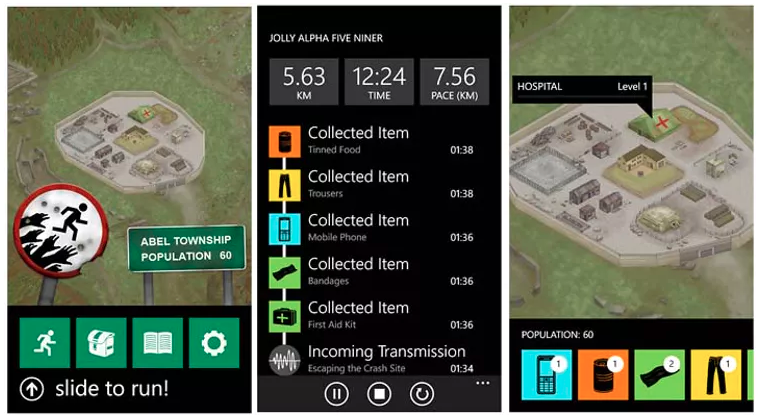Shutterstock
Guest post by Richard Brookes, Coventry University
It was a remarkable year for innovation in audio story telling. Listeners in 2017 had the chance to experience new ways of listening to stories told through artificial intelligence, gaming, augmented reality and personalised soundtrails.
The shift of radio plays to smartphones has transformed the medium and is bringing a wave of innovation. Yet audio fiction has always had a radical relationship with technology, from the early development of the Electrophone in the 19th century, which enabled London listeners to catch up on stage performances from as far as Paris – or experimental thinking in the 1930s from Bertolt Brecht about switching the direction of radio so listeners led the stories.
As audio storytelling goes digital, new and old ideas about the potential of the medium are being realised. Here are some of the trend to look out for:
1. Stories ‘born digital’
Digitisation has transformed the distribution of audio fiction, but “new” drama often looks a lot like its radio equivalents – linear stories told in weekly instalments. But why stick to this format when smartphones give the listener the opportunity to select, rewind and listen again?
BBC Radio 4’s The Reservoir Tapes takes the opportunity to do something different, releasing the story of a young woman’s disappearance in a series of short stories that can be listened to in any order, allowing the listener to do the detective work. Other independent production storymakers are experimenting with denser plotting, “minisodes”, unlocked episodes and in-world interviews with characters playing with how the audience experiences the world.
2. More than just noise
In 2014 Lance Dann, wrote an influential article observing that, since all people’s visual, sound and entertainment media are on one device, why should an audio play just stop at being just, well, sound? Having pioneered this approach with The Flickerman in 2008, he launched the much lauded thriller Blood Culture in 2017 which enables fans to explore character-made videos, apply to join the shadowy “Meta” organisation in which the story is set or engage in a text exchange with one of the characters automated by AI.
Lance Dann: behind the scenes of the Blood Culture podcast https://t.co/vfBQgpSVaE #Everyday Science pic.twitter.com/BaDFymerI9
— ScienceNewsLH (@ScienceNewsLH) June 15, 2017
Other independent productions have expanded beyond the phone with Liberty and Our Fair City, realising their worlds through stage shows, comic books, role playing games and even escape rooms.
3. Getting the listener involved
Involving listeners in the shaping of the story has long been an aspiration of radio thinkers since the 1930s and radio producers during the 80s and 90s played with listener phone-in productions such as the Finnish improvised production, Diamonds out of a Hat. More recently the online serial, You Are Here, updates the listener-led format for the internet age. Yet, like in so many areas, artificial intelligence and the internet of things is creating new opportunity. The BBC R&D seized upon this by releasing The Inspection Chamber, a sci-fi comedy that works over Amazon Alexa and other smart speakers, responding to an individual person’s voice and changing the plot accordingly, working through a “story engine” as a computer game might.
4. 3D soundscape
As listeners swap speakers for smartphone headphones, new opportunities emerge for dramatists to develop more ambitious soundscapes. One technique is the use of binaural recording – whereby microphones are positioned to mirror the experience of human ears. It’s a well-established method but one still rarely used. “It offers a fresh new perspective,” says Michel LaFrance in an interview. His company, Owlfield, is known creating immersive sometimes fantasy soundscapes, that put the listener at the centre of the experience in the same way VR does in vision. “There is a greater connection, to a story,” he notes, “when you feel present alongside the characters in the story-world.”
5. All that is written can be heard
Instant downloads have created a major uplift in the audiobook market and publishers have noticed. Audible led a number of innovations in the field from Whispersync, which allows readers to switch seamlessly between digital books and audiobooks, to ACX, an online marketplace for writers, producers and narrators.
APPRENTICE: Scarlet City Part 1. An Audible Original Drama by Rebecca Gablé https://t.co/0Y5IQ5Un3I via @AmazonUK. This epic audio drama series, brilliantly directed by Barnaby Edwards, also has a pretty epic cast – and I’m delighted to be one of them! pic.twitter.com/GgF6ZB6wiE
— John Banks (@JohnBanks13act) December 5, 2017
Harper Audio is another publisher championing the spoken word by seeking to ensure that everything it publishes in print is available in sound. “As listeners get ever more sophisticated,” says award-winning producer Ali Muirden: “they are driving the need for publishers to experiment and innovate into new territory.”
A recent example of this is the epic production of Scarlet City by Audible Originals, which featured a cast of 50 actors. Parts two and three are expected over the next year.
6. All that can be seen, can be a story
In the experimental Ambient Literature project, the idea of linking words with speech is taken further with the production It Must Have Been Dark by Then. This fascinating concept uses phone GPS systems to plot walks across cities and spaces, creating soundscapes from remote locations and linking to sections of a print book creating a unique sensory experience for the listener.
How the Zombies, Run screen looks to a player. Windows Phone Central
The project seeks to redefine what are actually now quite common technologies and its products range from from audio tours of stately homes, to speaking statues and geo-location entertainment – such as the running game Zombie, Run, linking sound to location is quickly becoming more widespread.
7. Bringing it back to real life
Among all this technological change it can be easy to forget where audio drama began – with live theatre recordings. The ability to see loved characters brought to life and the creativity of live Foley (sound FX) work is becoming popular among a new generation of fans.
In a discussion for this article, leading Foley artist Ele Matalan, from Chicago’s Wildclaw theatre, summarised the power of the medium: “The audience get surprised by their own investment in the stories and the characters”, she says. “So when something horrible happens to one of them it packs more of an emotional wallop.”
In all of these innovations, it is the listener experience that matters. As Duncan Speakman of the Ambient Literature project observes, it is less important what technology is used, as creating the tools for creators to use. Digital integration and the fast expanding range of options means that what might seem experimental today, can be quickly integrated into a plot tomorrow. The new stories of 2018 may take you to some unexpected places, literally.
Originally written for ‘the Conversation’.





Comments are disabled